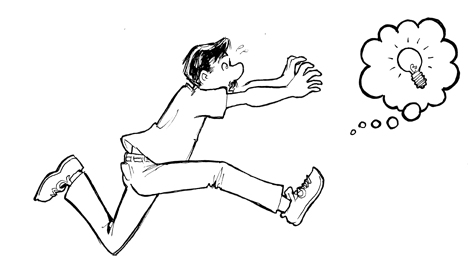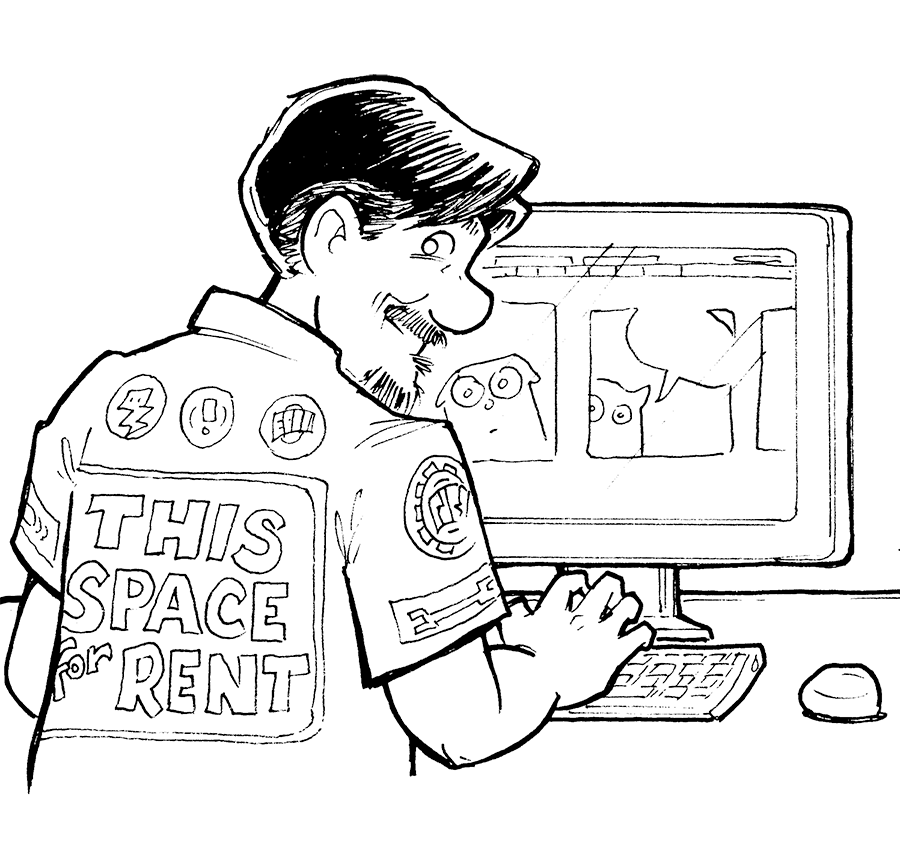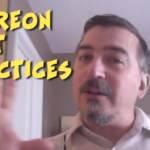Five Changes You Should Make Now
 I’ve been saying it for the better part of the year — if you’re still doing things the way you did three years ago, you’re making a big mistake. Here are five “traditional” approaches to webcomics that you need to re-think… today.
I’ve been saying it for the better part of the year — if you’re still doing things the way you did three years ago, you’re making a big mistake. Here are five “traditional” approaches to webcomics that you need to re-think… today.
Advertising is dead
Ad blockers have killed the ad-supported, “free” webcomics business model. It’s time to move to a for-pay publishing model — and that means either a subscription model or a digital version of a traditional publishing model. If you choose the former, the best bet is Patreon. If you choose the latter, you’ll be releasing your comics as a for-pay download (and later, you’ll be Kickstarting a print edition). Your site must, therefore, switch from offering content to offering samples and other promotional features.
Reconsider a landing page
Unless you’re producing a comic that can be understood by a new reader on every update, you need to reconsider how you’re presenting your work. A landing page that indoctrinates new readers and ushers returning readers to the new content is optimal. I can’t stress this enough. Your main page has to keep new readers. Presenting them with the middle of a story they don’t understand will lose them. And they’re not coming back.
The average Internet user does not read websites. They read social media. And they only read sites when social-media directs them there. After that, if they like what they see, they may start visiting the site without the social-media prompt. But if they’re confused by what they see, you’ve lost them — likely forever.
Social media: Create AND curate
Social media is a powerful promotional tool, but it’s not plug-and-play. It needs to be tended to often. That means saying interesting things — beyond “hey, here’s a new comic.” But it also means sharing interesting things that other people have posted. If you see something good, share it. That includes cross-promotion. Sharing a post highlighting someone else’s comic, Kickstarter, Patreon, etc. is just as beneficial as your thoughts on the latest Netflix release.
That steady beat of posts — original and shared — will help drive your followers up and increase your reach. And that’s going to make a big difference when you do have something important you want to say.
Free archives are going away
Free archives were great when they were ad-revenue drivers. But they’re not. Not anymore. It’s time to re-envision your archives as Patreon perks and drivers of print-edition and digital-download sales. It’s going to be increasingly common to see sites featuring messages such as: “To read the comics from 2005, buy XYZ book — also available as an eBook.” Free archives that stretch back for years are going to disappear. You’ll be asked to buy the book instead.
Con jobs
As conventions continue to be dominated by sellers of unlicenced prints, independent creators will increasingly drop comic conventions on their list of priorities — especially those who rely on their comics as their primary source of income (or hope to do so soon). The meager promotional benefits are easily outperformed by online promotion (such as social media) and online advertising. Networking is important, but you don’t need to buy an Artist Alley table to network — in fact, you can network better away from your table. Finally, as online content becomes subscription-driven, it will be more and more costly to lose production time to con travel. That means fewer convention appearances — especially for those cons that haven’t produced profits in the past.
For more reading…
The Thing That Makes You a Good Cartoonist makes You Bad at Social Media… Here’s How To Fix That









 Tips on Running a Successful Kickstarter
Tips on Running a Successful Kickstarter Lettering Pro-Tip: Avoid using numbers in word balloons
Lettering Pro-Tip: Avoid using numbers in word balloons New look, new features for Patreon
New look, new features for Patreon









